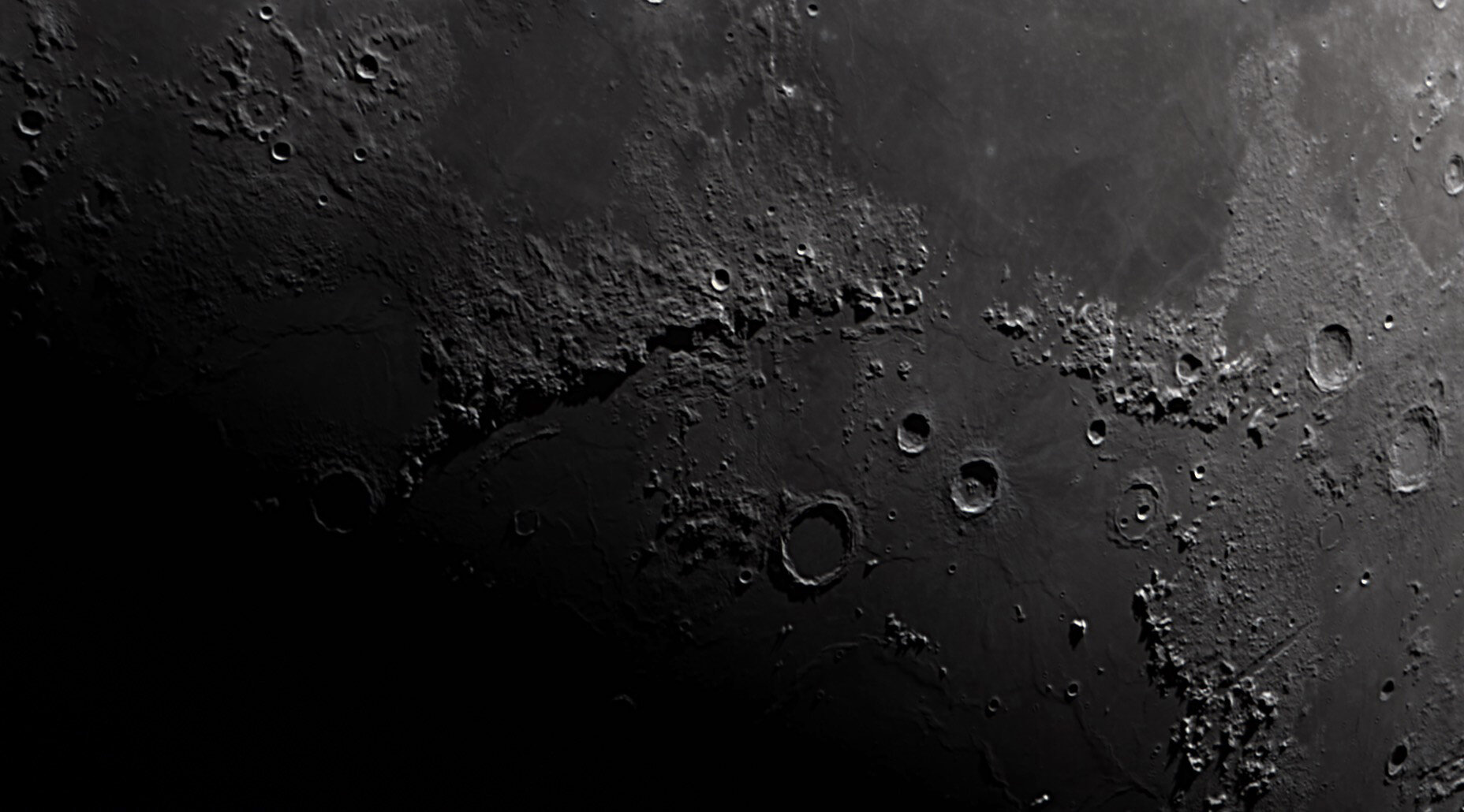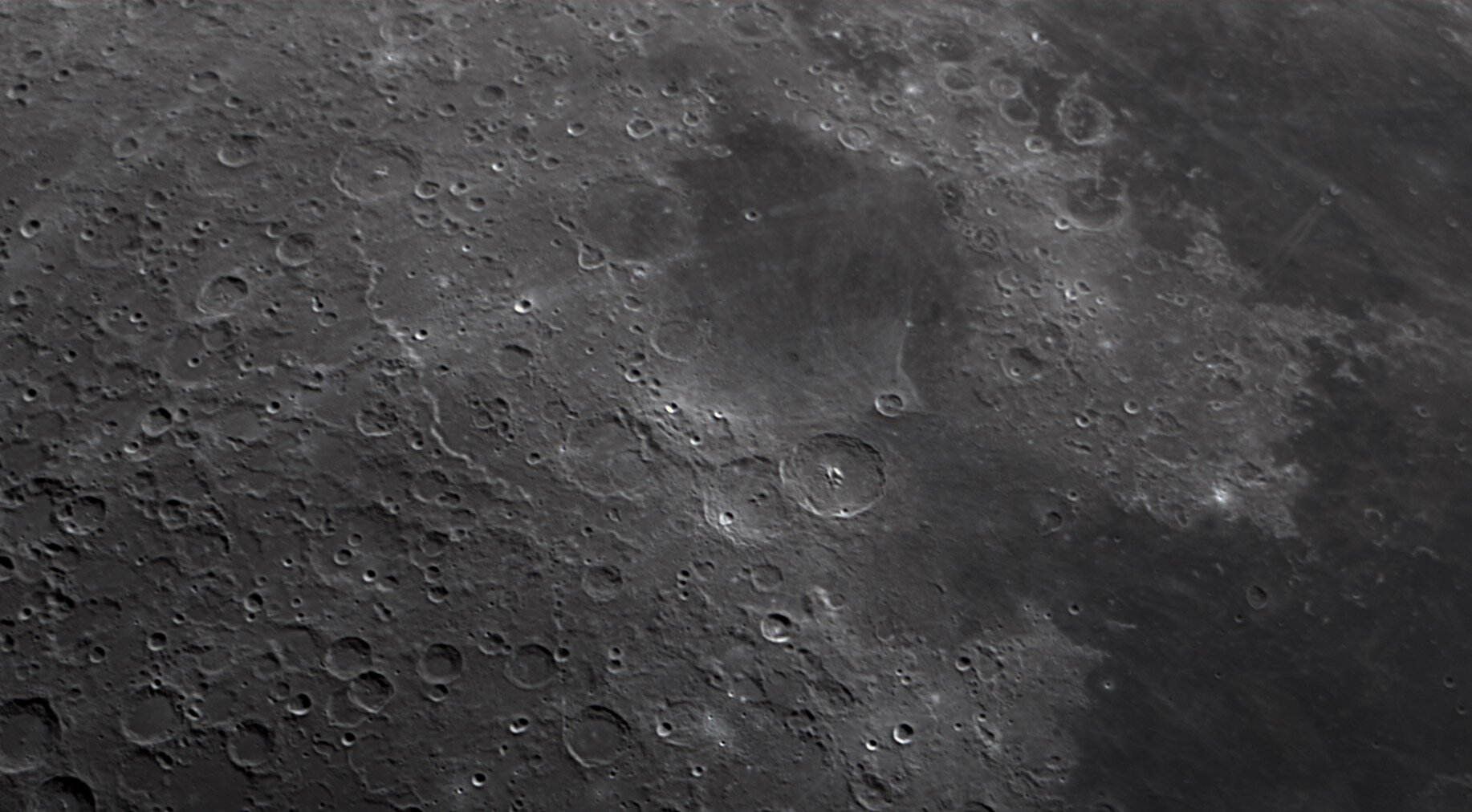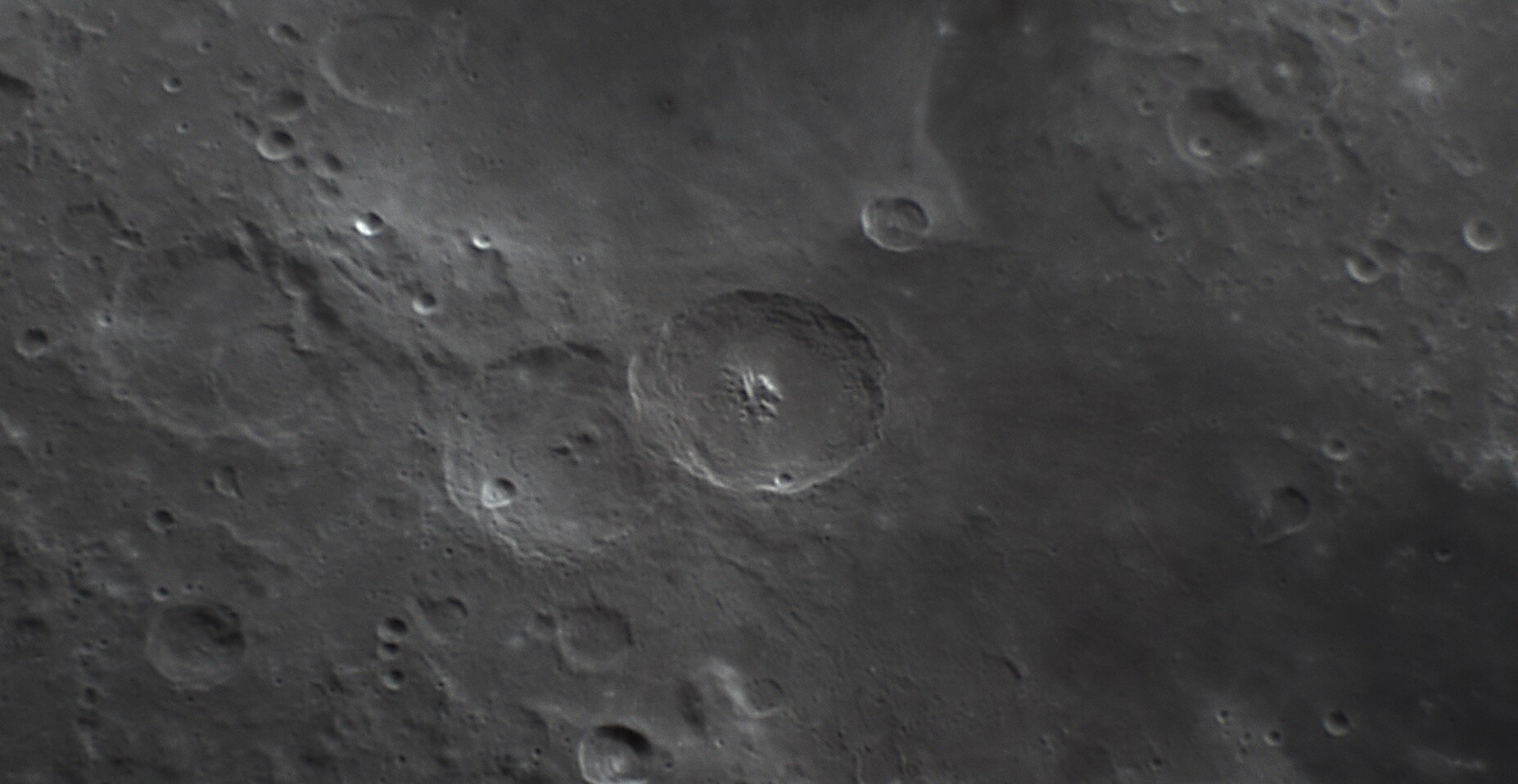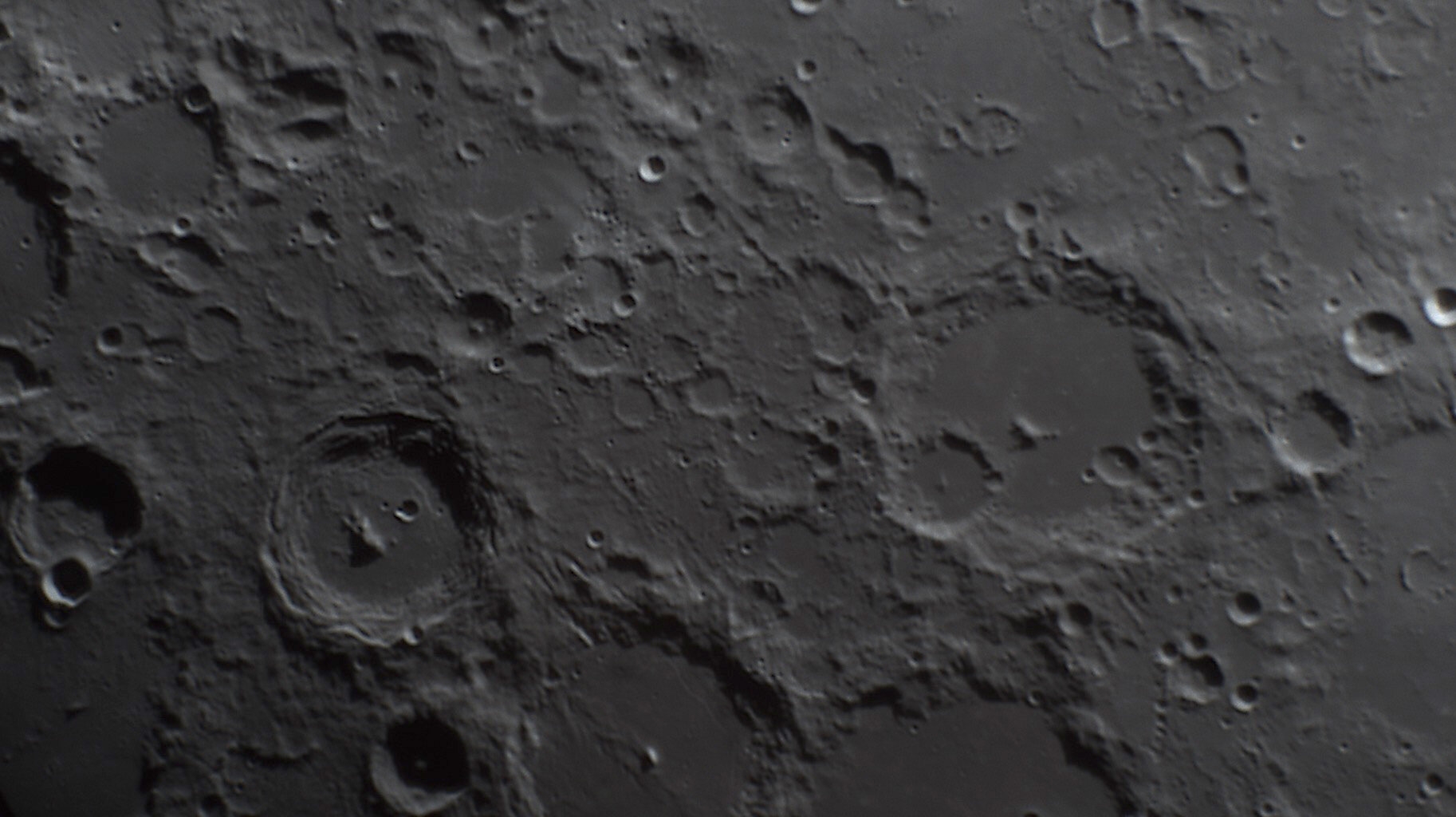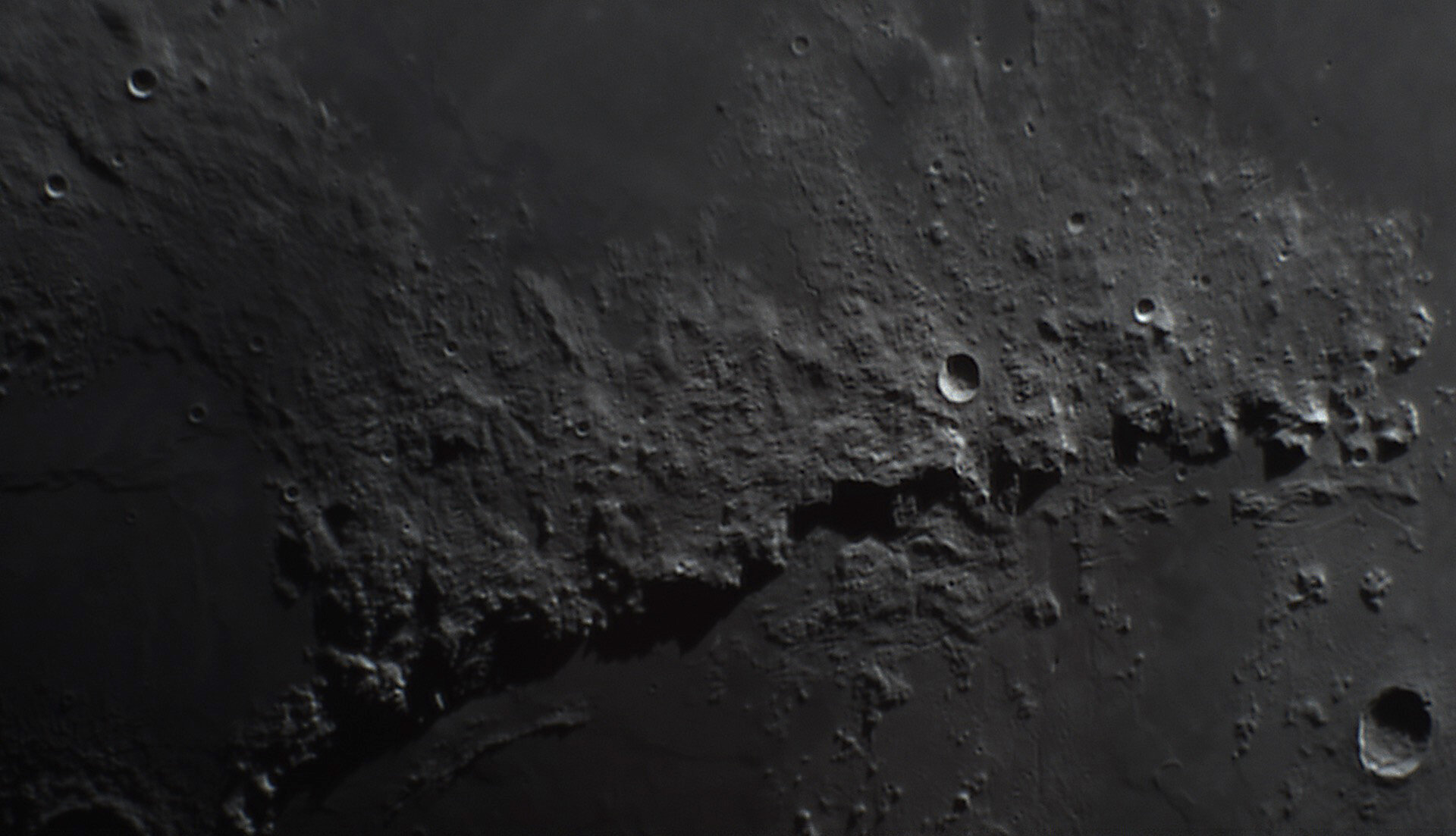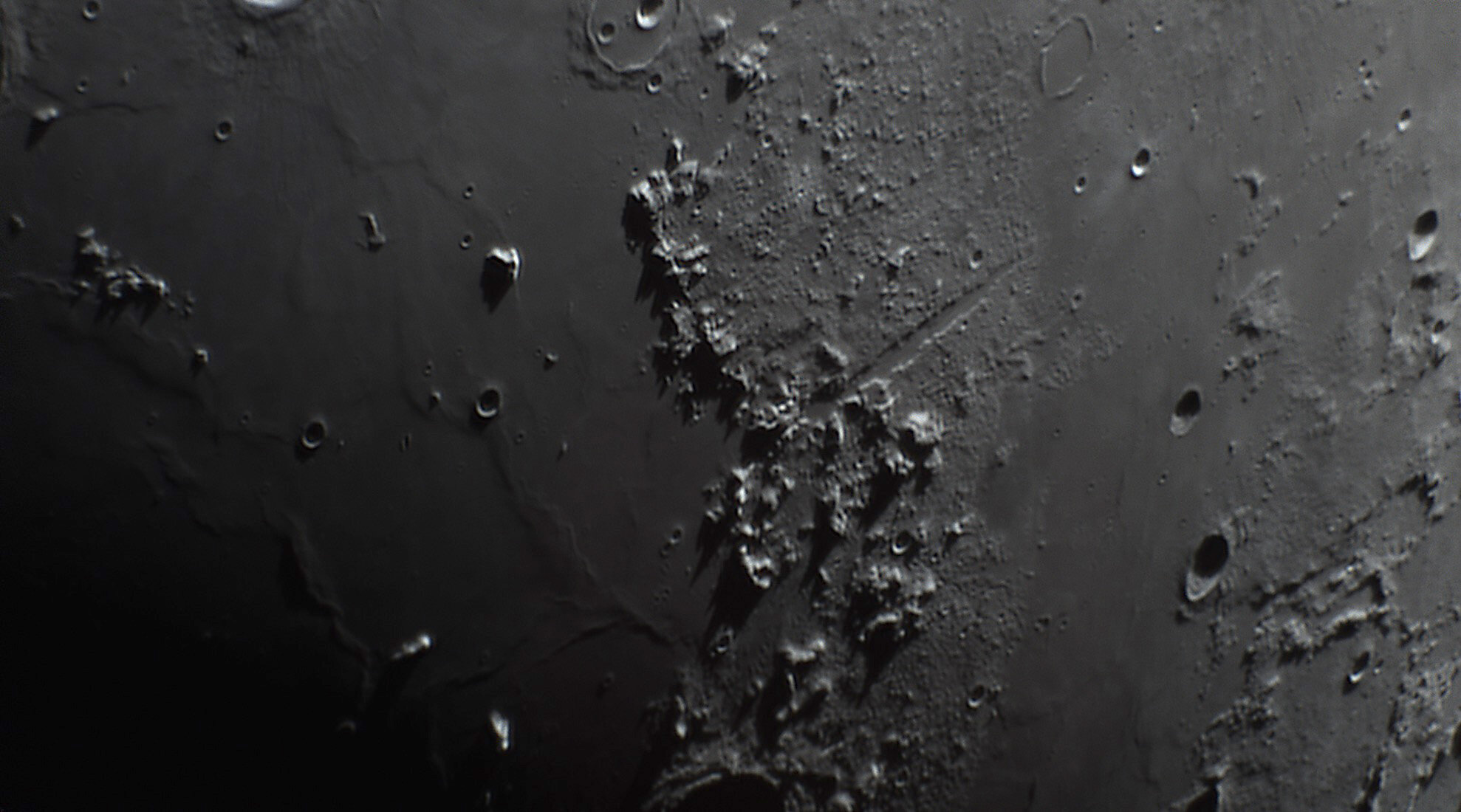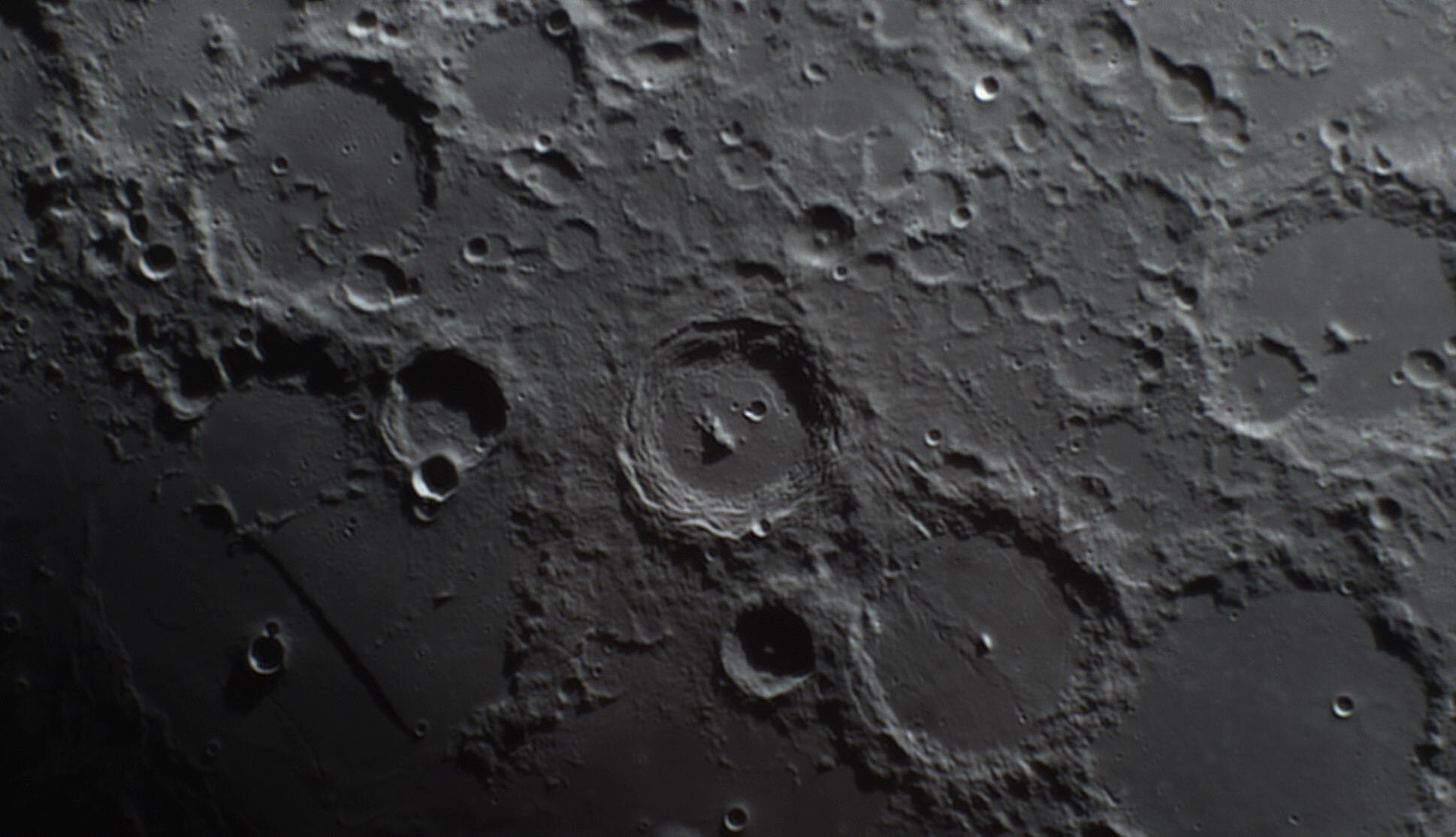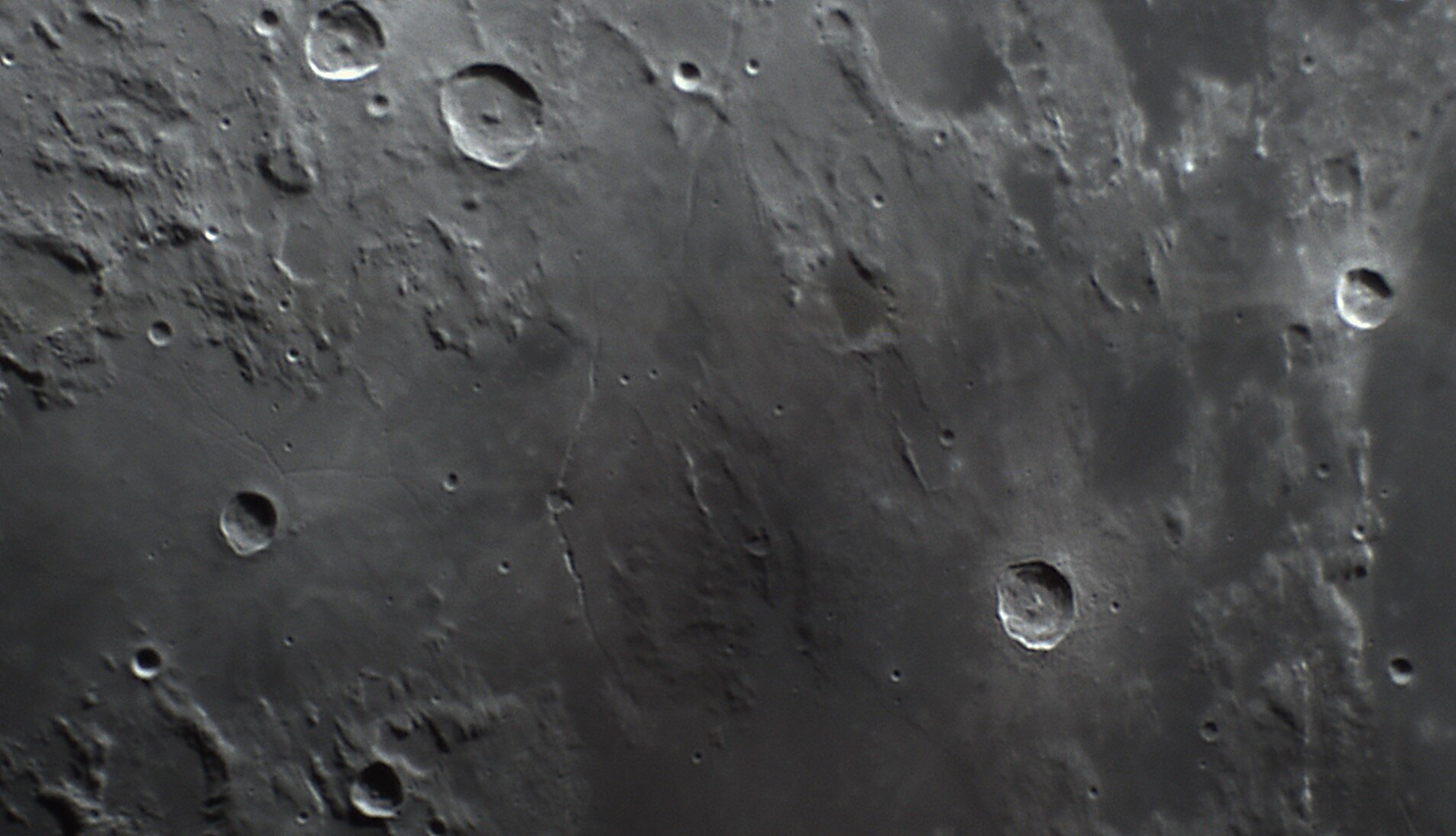Taking Photos of the Moon
This past week the moon was directly overhead. A cold front had just come through and cleared out the clouds giving us some good transparency and seeing here in the south. I swapped out my normal imaging scope (the SkyWatcher Esprit 100) for my Celestron C5 Spotting scope. While Celestron considers this a spotting scope, it is a Schmidt Cassegrain telescope, and is in fact the same telescope that is used in the NexStar 5SE package that they sell. For its size, it’s extremely well made, and provides very crisp sharp views.
The Celestron C5, set up and aimed at the moon prior to dusk.
I prepped for the imaging session by aligning my mount, and targeting the Moon. Then I got out a chair and enjoyed some visual views through my Tele Vue Delos 10mm eye piece before getting to the imaging.
For imaging, I connected up the ZWO ASI462MC camera, to my Mac Book Pro using a USB to USBC adapter that Apple makes. Then booted up ASICap, which is part of the ASIStudio imaging suite from ZWO to capture the images.
I set my frame rate down into the low 20 MS and gain between 0-200 until I found the right balance of speed and contrast. On the moon it’s easy to blow out parts of the images (like highlights of light on craters), so I keep the histogram towards the left (dark) half to ensure I don’t wash out any parts of the image. I know I can always go back in post processing to brighten up the mid-tones of my images if I need to. I shot a few images at the native focal length of the telescope (1250mm), then put in a Tele Vue PowerMate 2.5x to more than double the focal length to a whopping 3125mm! This also more than doubles the F ratio from F10 to F25, and requires a refocus and changes to the gain and capture speed to reflect the slower speed of the scopes light gathering abilities at F25.
My imaging equipment for the session:





